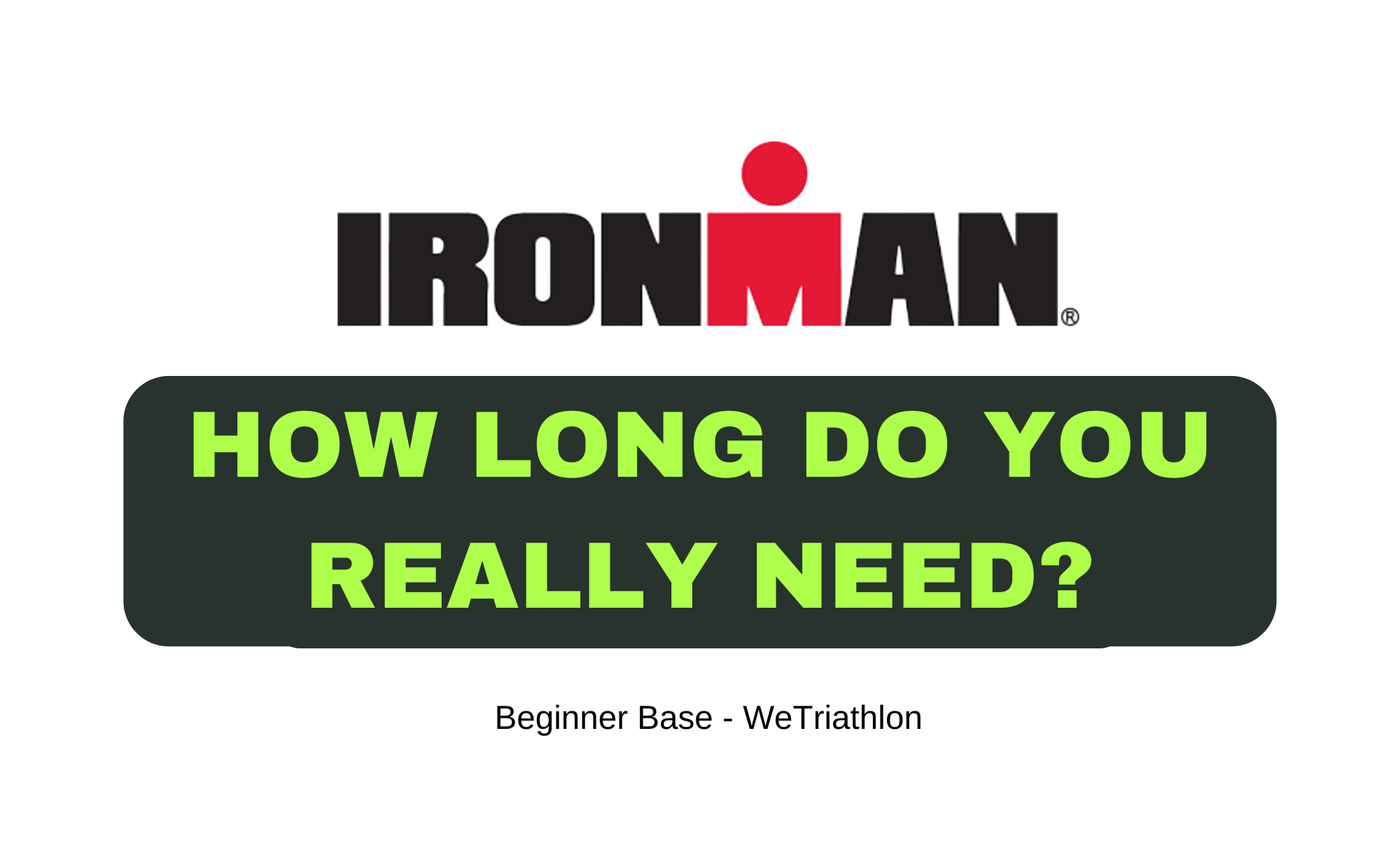Ironman Triathlon Preparation: How Long Do You Really Need?
Ironman Triathlon Preparation: How Long Do You Really Need?
First, assess your current fitness level. Read below to learn how start to prepare for an Ironman, whether you're a beginner, moderately active, or regularly training.
You don’t have time to read? You can listen here.
Reading time: ~ 3 minutes
1. Never Done Sports: Starting Your Ironman Journey
If you’ve never done any sports before, tackling an Ironman might seem like an overwhelming task, but with the right plan and determination, it’s absolutely achievable. For beginners, a long training plan of around 24 weeks is ideal to gradually build the fitness needed for such an endurance event. The key is to start slow and build a solid base of endurance and strength.
A. Building Your Foundation
In the beginning, focus on improving your aerobic capacity and overall endurance. Start with short sessions of walking/running, light cycling, and easy swims. Don’t worry about Ironman distances right away; just focus on moving consistently and increasing the length of your workouts over time.
B. Gradual Endurance Development
As your body adapts, you can start increasing the duration and frequency of your training. Swim, bike, and run for longer periods, but pace yourself. Training should be well-balanced, with days of harder effort mixed with recovery days.
C. Importance of Recovery and Consistency
Rest is critical, especially for those without a sports background. Plan full rest days and make sure you’re getting quality sleep, as it’s essential for your body to adapt. Patience is key—Ironman preparation takes time, but with dedication and consistency, you’ll see steady progress.
WeTriathlon Recommends:
Start with smaller races to understand your abilities and limits, and most importantly, rely on a coach or professional to guide you. This is where we can help. Working with an expert ensures that your training is tailored to your needs and goals, minimizing the risk of injury and maximizing your progress. Learn more about how to get started and set yourself up for success here!
2. Occasional Sports: A Gradual Approach to Ironman
If you do some sport occasionally, such as jogging or light cycling, you're in a better starting position than complete beginners, but preparing for an Ironman still requires careful planning. A 24-week plan is probably safest, but you can train with a bit more intensity from the start.
A. Improving General Fitness
Assess your current fitness level. If you already run, swim, or bike from time to time, focus on gradually increasing the frequency of your workouts. A solid starting point could be running 5-10 km, swimming for 30 minutes, and cycling for about an hour each week.
B. Structuring Your Workouts
Your goal at this stage should be to add structure to your training, focusing on specific swim, bike, and run sessions. Gradually increase the distances and the time spent on each discipline, but pace yourself to avoid injury. Include specific sessions to improve speed and endurance.
C. Balanced Training and Recovery
The common mistake of occasional athletes is to overtrain in the early months. Balance your training with recovery, ensuring your body adapts gradually. Start with 6-8 hours of training per week and gradually increase to 10-12 hours.
WeTriathlon Recommends:
Start with smaller races to understand your abilities and limits, and most importantly, rely on a coach or professional to guide you. This is where we can help. Working with an expert ensures that your training is tailored to your needs and goals, minimizing the risk of injury and maximizing your progress. Learn more about how to get started and set yourself up for success here!
3. Regular Athlete: Refining and Optimizing for Ironman
If you’re a regular athlete, you’re already well-prepared to take on the challenge of an Ironman. A shorter training plan of around 12 weeks may be enough if you have a solid fitness base. However, you’ll still need to focus on specific training for swimming, cycling, and running.
A. Intensifying Training
If you're already used to swimming, cycling, and running regularly, you can immediately begin intensifying the volume and specificity of your training. A regular athlete should be able to swim comfortably for an hour, cycle for at least 2-3 hours, and run 10-15 km with ease.
B. Focusing on Transitions and Race Strategy
At this stage, beyond improving endurance and speed, you should also work on transitions (T1: swim-bike, T2: bike-run). Transitions are often underestimated, but they are a crucial part of the race. Practice changing quickly and efficiently adapting your gear to save valuable time.
C. Refining the Details
With a solid fitness base, you can also focus on the finer details that make a difference: nutrition, race strategy, and specific training for each discipline. Practice fueling properly during long bike and run sessions, simulating race conditions.
WeTriathlon Recommends:
Start with smaller races to understand your abilities and limits, and most importantly, rely on a coach or professional to guide you. This is where we can help. Working with an expert ensures that your training is tailored to your needs and goals, minimizing the risk of injury and maximizing your progress. Learn more about how to get started and set yourself up for success here!
IronMan
IronMan
Unlock Your Full Potential: Master Triathlon with Our Expert Video Course!





